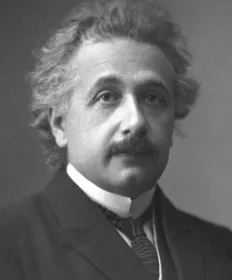Physics
Unification: The Grand Finale
“The end and aim of all science is to find the unity, the one out of which the manifold is manufactured, that One existing as many.” ‒Swami Vivekananda
Dr. Rajeshwar Mukherjee

The adventure of science is inspired by the search for a single set of fundamental principles, which is capable of explaining the reality of the natural world and all diverse and distinct phenomena happening in it. Science has been striving to explain the wildest array of phenomena with a set of a few physical principles. Thus unification emerged as a basic trend in the field of natural sciences. The great Albert Einstein was fascinated by the unifying nature of the physical laws and was motivated to work out the unification of the physical principles and phenomena. The discovery of the special theory of relativity and the general theory enabled him to unite space, time and gravity. Taking a leap forward, he dared to embark upon a much wider scheme of unification. He conceived of a single, all-compassing framework called the unified theory, which may be capable of uniting all the laws of nature. Einstein’s dream remained unfulfilled in his lifetime, as the primary obstacle to actualizing the unified theory was the conflict between the two fundamental theories, general relativity and quantum mechanics, which form the bedrock of modern physics. However, in the pursuit of unification, scientists arrived at some epoch making discoveries which partially fulfilled the goal of unification. Electric and magnetic forces were found to be combined as electromagnetic force. Later in the year, 1967 a theory propounded by Weinberg and Salam proposed that the electromagnetic force and weak force are two different aspects of the same force called the electroweak force. The experimental validation of the same in the year 1983 was a remarkable achievement towards establishing the unification. In a higher-level unification, called the grand unification theories (GUTs), the strong force could be combined with the electroweak forces. All three of the four fundamental forces were found to be united but the gravitational force could not be brought under the umbrella of unification. The disharmony between the general theory and the quantum mechanics has come in the way of the unified theory and hence the coveted unification of all fundamental forces is yet to be achieved. The superstring theory however mathematically worked out the unification but there are still many open questions. However, the cherished goal of physics is to reach the Grand Unification. On the other end reality is not exhausted within the limit of the physical world. The biological world, psychological world, intellectual world, and the world of consciousness are also the different aspects of the reality. How are these diverse worlds related to one another? Though interdisciplinary studies have opened the floodgate of cross disciplinary approach, the achievements are indeed scanty in comparison to the myriad of mysteries of the universe. The ancient Indian wisdom, especially the Vedānta, upholds the unity and the solidarity of existence. Several Upaniṣads articulate the concepts of unification in its own suggestive style. The ancient Indian seers guided by logical reasoning not only worked out the unification at different relative levels but envisioned the grand unification from the depth of their realization. Swami Vivekananda was the pioneer in interfacing Vedānta with modern science and later the early fathers of quantum mechanics like Schrödinger, Heisenberg, Pauli and others derived insights from this perennial source of wisdom, which is the Vedānta.



